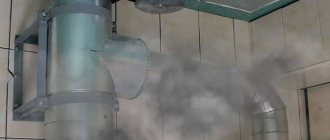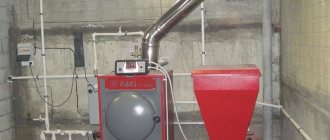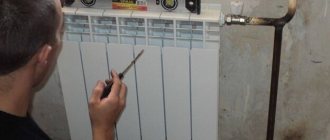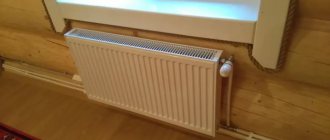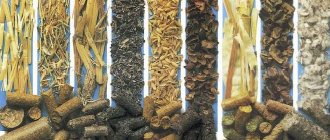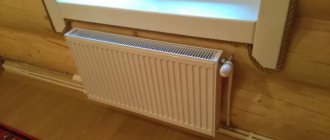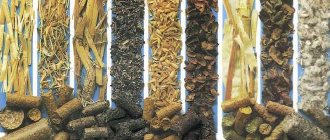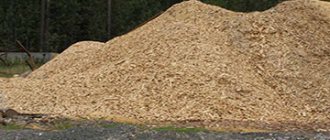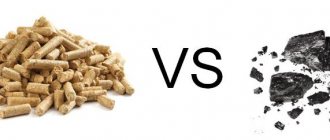December 31, 2022
Pellets are small-sized (diameter 4–8 mm, length 0.5 to 7 cm) cylindrical wood pellets, manufactured using special equipment and intended mainly for heating. In Western European countries, pellets have long been successfully used for heating cottages and country residences. In our country, this product became popular not so long ago. One of the main advantages is the environmental friendliness of the raw materials. An important advantage and ability to use pellets in automated systems: loose granules are poured into a special tank and fed into the boiler in an automated way, without any human participation in this process. This is a significant advantage over other types of solid fuel: chopped wood, coal, briquettes, which regularly need to be added manually to the stove to maintain the combustion process. Fuel pellets retain heat well, which means that your house or apartment will always be warm and comfortable.
Fuel pellets
A low degree of humidity contributes to the rapid combustion of raw materials, high efficiency and heat transfer, and the high bulk density of pellets simplifies transportation and storage, and increases the operating time of the boiler on one load.
Pellet consumption
When designing a heating system in a private home, the issue of choosing a power source is acute. Of course, the gas boiler remains the easiest to maintain and the most economical in our country. But such systems are not safe. In addition, if you live in a remote, ungasified region, and the main gas pipeline runs very far from home, there is no way to extend it, there are not many options left:
- electrical appliances (warm floors, electric boilers, infrared heaters, etc.);
- solar collectors;
- solid fuel.
The use of electrical appliances is irrational in terms of heating costs. Not everything is clear with solar collectors either. What remains is solid fuel: coal, firewood, briquettes, pellets.
Solid fuel
Which of these fuels should you prefer? And there is no clear answer here. If we talk about ease of use, then the best choice is pellets, which allow you to automate the heating process. But this also leads to a minus: you need to purchase a pellet boiler (which is not cheap). It has a hopper for filling pellets: from the hopper, using an auger, pellets are fed into the firebox.
Fuel boiler
Both pellets and briquettes have minimal humidity, which makes them 1.5–2 times more economical than conventional firewood. Pellets have almost the same consumption as coal. But at the same time, pellets for the boiler (white, premium grade) have low ash content.
What standards are used to determine the quality of pellets?
Russian pellet producers use quality standards adopted in European countries. Foreign manufacturers of fuel for pellet boilers receive certificates of compliance of their products with the quality standards in force in Europe. The lack of a document confirming the quality of pellets scares away buyers. At the same time, the cost of certified products of the same quality is higher than non-certified ones.
The quality standards EN plus and EN-B set out requirements for household and industrial pellets according to a number of criteria, namely:
- diameter;
- length;
- bulk mass;
- heat of combustion;
- humidity;
- abrasion (percentage of dust);
- hardness;
- ash content;
- ash melting temperature;
- the content of metals and other chemical elements indicated in mg per kg.
Manufacturers wishing to win the tender for government procurement of pellet fuel must provide an EN plus certificate in the package of documents.
How many pellets are needed for the heating season?
Pellet consumption
To calculate fuel consumption for the heating season, you need to know:
- boiler power (Pk);
- duration of the heating season (D).
Consumption = (Rk × D × 24 hours × 30 days × 0.7) / 3.5 kW/h.
The coefficient of 0.7 is included in the formula for a more accurate calculation, since the boiler will not operate at full capacity all the time. 3.5 kW/h – calorific value of 1 kg of pellets.
Let's consider an example calculation for a private house with an area of 200 m2, for heating which requires a 20 kW boiler, and the duration of the heating season is 6 months. Substituting these data into the formula above, we get:
Consumption = (20 × 6 × 24 × 30) / 3.5 = 17280 kg. It turns out that to provide heating for a house of 200 m2 for the winter, 17 tons of pellets will be required. At the time of writing (December 2022), one ton of pellets costs on average 8.5 thousand rubles. This means that to purchase pellets for the entire heating season you will need 144,500 rubles. Draw your own conclusions. Is it worth purchasing this product or using a cheaper one - RUF briquettes.
What are pellets made of?
To produce pellets, they take waste that is supplied by wood production: dust, chips, sawdust, trimmings - any raw material containing lignin is suitable. In Russia, coniferous wood is most often used, although deciduous wood is significantly superior in quality. The use of needles is explained simply:
- for processing hardwood you need other, more complex and expensive equipment;
- Birch does not press very well.
But if you are lucky enough to find birch pellets on the market, it is better to prefer them. They release slightly more heat during combustion. In addition, when burning, birch fuel pellets do not form (unlike coniferous species) resins, which subsequently settle in the chimney pipe.
Main types and features
All pellets existing on the market can be divided into 3 types:
- Industrial.
- Agropellets.
- White.
The use of industrial pellets in a home boiler can lead to its failure. These granules are dark in color. Their ash content is higher than 0.7 due to the fact that, along with sawdust and dust, the composition contains impurities of tree bark. But some boilers can work with such fuel. Considering that the price of the pellets in question is almost half as much, this is a significant saving.
Industrial pellets
Agropellets are made from agricultural waste: straw, jute husks. The heat transfer of agricultural pellets is lower, but they are much cheaper. The ash content of such pellets is environmentally friendly and can serve as a good fertilizer for the soil. But the formation of large amounts of ash, again, can become a problem for many domestic boilers. The use of agro-pellets means that boilers will have to be cleaned regularly, so they are more suitable for boiler rooms.
Agropellets
And finally, white pellets. This is a premium look. They exude a fragrant woody smell. The ash content of white granules is only 0.5%. By loading such raw materials into the boiler, you can forget about the need to clean the boiler for a long time.
White pellets
What are pellets
Pellets are an alternative fuel for heating suburban real estate. Cheap (2 times cheaper than diesel fuel, but still more expensive than gas), convenient, environmentally friendly. Like any fuel, pellets have their own requirements for storage and transportation, but we immediately note that these requirements are more relaxed than the requirements for liquid or gaseous fuels. You can scatter pellets on your site without any consequences; they will not smell or stain the environment.However, you shouldn’t expect miracles: pellets are not a universal fuel that can be stored in any conditions, burn forever and be of any quality.
High-quality pellets, as a rule, have a smooth shiny surface without longitudinal cracks. The presence of a smooth and shiny surface indicates, first of all, that the granulation process was carried out at the right temperature, as a result of which lignin, contained in wood and being a natural binder, “glued” the pellets together properly.
You can try scrap pellets. In general, the harder the pellets, the better, since soft pellets crumble when unloaded/reloaded into the hopper and fed into the burner zone. This parameter is called abrasiveness and is measured by a device called Lingotester. In short, the technology is as follows: a weight of 100 kg is applied to the samples for one minute, and then blown with air under pressure. The quality of the pellets is determined by the number of particles less than a certain size specified by the standard - the more particles (the pellets crumble accordingly), the lower the quality of the pellets. By the way, when considering the amount of dust and small particles in a pellet package, it is worth taking into account how many times these pellets were reloaded, since with each unloading and loading the number of small particles and, as a result, dust increases. As a rule, pellets in bags have less dust compared to pellets shipped in bulk.
Pellet diameter Sometimes you hear that 6 mm are the right pellets, but 8 mm are not. This statement is due to the fact that 8 mm pellets are produced on equipment converted from domestic granulators, previously used in agriculture for the production of compound feed, and, accordingly, cannot be of high quality, and 6 mm are mainly produced on imported equipment. However, like 6 mm pellets, 8 mm pellets come in completely different qualities.
On the other hand, pellet fireplaces, for example, due to the design of the supply system, work better with 6 mm pellets. The equipment manufacturer usually indicates the type and diameter of the pellets used. It is not recommended to use pellets of other sizes, since, firstly, the boiler automation is configured for optimal supply of air and pellets of this particular diameter, and secondly, the use of pellets of a larger size than recommended leads to increased loads on the boiler mechanics, which can lead to premature output it is out of order.
From our own experience we can notice that the smaller the diameter of the pellets, the faster they crumble.
Color Typically, white-yellow pellets are made from furniture production waste; pellets with brown inclusions are made from raw materials with the addition of bark. However, the color of pellets is not a quality criterion. By the color of the pellets you can determine what raw materials were used, how the pelletization took place and how the pellets were stored. But the color will say little about the quality of the pellets themselves.
Smell As a rule, pellets smell of the wood from which they were made or do not smell at all. On the other hand, pellets, when stored for a long time, absorb moisture from the surrounding air and, accordingly, odors.
Dissolving pellets If you put pellets in a glass of water, after a while the pellets will turn into a wet mass. If this does not happen, then it is likely that some external chemical was used as a binding agent. By rotating the glass, you can determine the number of heavy particles, a large number of which indicates the presence of sand, or the use of wood waste with dust from grinding machines. Let us immediately make a reservation that this method of detecting sand in pellets is inferior in accuracy to the method of burning pellets in a boiler.
However, let us repeat once again, color and smell are indicators of what kind of wood the pellets were made from and how they were stored, but they say little about whether the pellets contain non-metallic impurities (sand), which is the main “enemy” of pellet boilers .
When determining the quality of pellets, it is worth paying attention to the production itself. Firstly, as a rule, in large industries, raw materials come from one source, which in some way guarantees the stability of production. Small pellet factories usually do not have their own source of raw materials (otherwise it would be a large production) and the raw materials are collected at nearby sawmills, etc. As a rule, the larger the production volume at the enterprise, the more stable the quality of pellets. For small volumes, different raw materials are usually used, and the equipment is often not adjusted for one or another raw material, which ultimately can lead to a decrease in the quality of the pellets. By the way, for example, the Austrian standard describes not only the quality of the pellets themselves, but also the production and transportation of pellets.
What cannot serve as an evaluation criterion Pellets always sink in water, both good and bad, since the density of pellets is greater than 1 (units). The smell of pellets is not an evaluation criterion, with the exception of foreign odors indicating the use of chemicals. binders or improper storage. A smooth edge at a break in the pellet also says little.
A more detailed and reliable assessment can be made in a specialized laboratory, but it should be borne in mind that this is a voluntary matter and, as a rule, the manufacturer receives a certificate at the beginning of production, which does not always guarantee that subsequent batches will be of the same quality. Typically, laboratory test results indicate the following parameters.
| Parameter | Effect (what does it affect) | |
| Chemical characteristics | ||
| Humidity | Storage conditions, calorific value, losses, spontaneous combustion | |
| Calorific value | Pellet use, fuel efficiency | |
| Chlorine | HCL, chimney corrosion | |
| Nitrogen | NOx HCN and H20 emissions | |
| Sulfur | SOx | |
| Potassium | Reducing the melting point of ash melting, slag formation | |
| Magnesium, Cadmium, Lead | Raising the melting point of ash | |
| Heavy metals | Environmental pollution, possibility of using ash | |
| Ash content | Possibility and cost of ash disposal | |
| Microbiology | Health Risk | |
| physical characteristics | ||
| Density, dimensions | Transport costs, storage costs | |
| Dust volumes | Loss during transportation | |
| Abrasiveness | Losses in use | |
Today, there are no standards for pellets in the Russian Federation, so most manufacturers rely on Western standards, which, by the way, differ from country to country or invent their own specifications. To our knowledge, a single European standard is under development. In addition, existing Western standards sometimes include not only a standard for the pellets themselves, but also standards for their production, storage and transportation.
Certificates for pellets in Russia are issued by various organizations. If a manufacturer sells pellets abroad (where 95% of products are currently sold), then it would be more logical to obtain a certificate from the international accredited laboratories Incolab and SGS. However, for internal purposes, you can obtain a certificate from domestic research institutes. The price difference is more than significant. As a rule, in domestic laboratories all analyzes are done according to GOST, and in Incolab and SGS according to ISO, ASTM, SS, etc. on imported equipment. Thus, you can request a certificate from the manufacturer for the produced pellets, but it should be taken into account that this certificate may not correspond to the final product.
Above we tried to describe possible ways to check the quality of pellets at home and in the laboratory. In our opinion, we repeat once again, the best test is burning pellets in a boiler and examining the results obtained. This is what we are focusing on.
Of course, since the pellet market is still in its infancy and the above is stated, we do not claim absolute accuracy and would be grateful for comments, corrections and suggestions on the topic of this article.
Application areas of fuel pellets
As has been noted more than once above, the main area of application for pellets is heating boilers. But it doesn't end there. In addition to boilers, there are grill stoves with automatic pellet feeding. You can cook delicious shish kebab, barbecue and other dishes in them.
Pellet grill stove
Wood pellets are actively used by farmers as bedding for goats, horses, cows and other animals. Pellets absorb liquid and unpleasant odors well in paddocks and stables. They are an excellent alternative to straw, which has been used for centuries for bedding in barns and stables. But fungi and other pathogenic microorganisms quickly grow in straw, which lead to the development of allergic diseases in animals. It is impractical and takes up a lot of space during storage and transportation. Therefore, using pellets is the best option: they are easier to transport and store, they are not eaten by animals, they are warm, soft and comfortable for livestock. However, not only farmers noted such advantages in pellets as the ability to absorb a lot of moisture and neutralize odors: wood pellets are often used by manufacturers offering cat litter. Soft pellets that do not stick to cat paws are very popular with pets.
Pellets for animals
